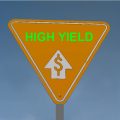How to Build a Diversified Investment Portfolio
Building a Diversified Investment Portfolio: A Guide for Beginners
Are you tired of feeling anxious about the future of your investments? Do you want to make sure that your money is working hard for you, but not too hard? Building a diversified investment portfolio can provide peace of mind and help you achieve your long-term financial goals.
In this article, we’ll break down what diversification means and how it can benefit you. We’ll also cover the steps you need to take to build a diversified portfolio that’s tailored to your individual needs and risk tolerance.
What is Diversification?
Diversification is a key principle of investing that involves spreading your money across different asset classes, sectors, and geographic regions. The idea is to reduce your reliance on any one investment or sector, so that if one part of the portfolio performs poorly, others can help make up for it.
Think of diversification like having a garden with multiple plants that bloom at different times. If one plant goes through a bad season, the others can continue to thrive and provide you with a steady supply of food (or in this case, returns).
Benefits of Diversification
So why is diversification so important? Here are just a few benefits:
- Reduced Risk: By spreading your money across different asset classes, you’re reducing your risk. If one investment loses value, others can help offset the loss.
- Increased Returns: A diversified portfolio can provide more stable returns over the long-term, as each part of the portfolio has its own growth potential.
- Improved Liquidity: Having a diversified portfolio means you’ll have access to cash when you need it, even if one part of the portfolio is performing poorly.
Step-by-Step Guide to Building a Diversified Portfolio
Now that we’ve covered what diversification is and why it’s so important, let’s take a look at how to build a diversified investment portfolio.
- Start with the Basics: Begin by assessing your financial goals and risk tolerance. What are you trying to achieve? Are you saving for retirement or a down payment on a house? How much risk can you afford to take?
- Choose Your Asset Classes: Next, choose the different asset classes that will make up your portfolio. These may include:
- Stocks: Represent ownership in companies.
- Bonds: Represent debt obligations.
- Real Estate: Represent property ownership.
- Commodities: Represent raw materials or natural resources.
- Select Your Investments: Within each asset class, choose specific investments that align with your goals and risk tolerance. For example:
- Stocks: Apple, Google, Amazon
- Bonds: U.S. Treasury bonds, high-yield bonds
- Real Estate: Direct property ownership, real estate investment trusts (REITs)
- Diversify Within Each Asset Class: To further reduce risk, diversify within each asset class. For example:
- Stocks: Instead of investing in just one company, consider a portfolio of 10-15 companies.
- Bonds: Consider investing in different types of bonds, such as government bonds, corporate bonds, and municipal bonds.
- Rebalance Your Portfolio: Finally, regularly review your portfolio to make sure it’s still aligned with your goals and risk tolerance. Rebalance by selling or buying investments as needed to keep your portfolio on track.
Common Mistakes to Avoid
While building a diversified investment portfolio can be a great way to achieve financial stability, there are some common mistakes to avoid:
- Don’t Put All Your Eggs in One Basket: Avoid investing too much of your money in just one or two investments.
- Don’t Ignore Fees: Make sure you understand the fees associated with each investment and factor them into your returns calculations.
- Don’t Over-Complicate Things: Don’t feel like you need to invest in every asset class or type of investment. Focus on what works for you and stick to it.
Conclusion
Building a diversified investment portfolio can seem overwhelming, but by following these simple steps and avoiding common mistakes, you can create a plan that’s tailored to your individual needs and risk tolerance.







